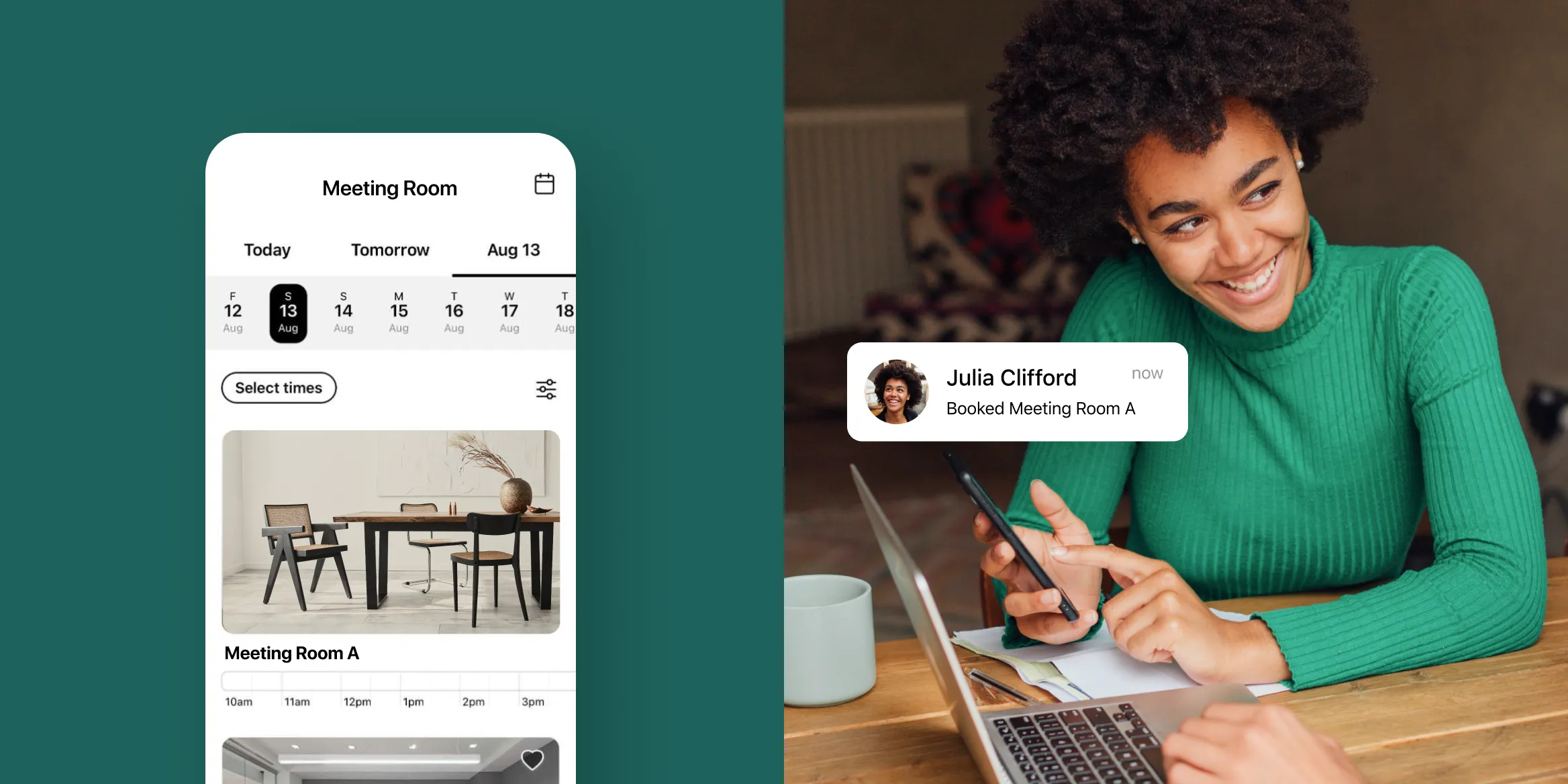When Jacob moved to California, the first thing he did was look for a coworking space that he could work out of a couple days a week. He tried out a few options in the area, from big name providers to indie spaces, but nothing really resonated with him.
As a budding tech entrepreneur, his needs were specific. And although he thought he was just looking for a space he could work from, what he really wanted was a curated community and a sense that the space was designed just for him.
When he couldn’t find what he was looking for, Jacob decided to open his own coworking space…specifically for tech entrepreneurs.
Everything from the events he organized to how he priced his plans was done with young entrepreneurs in mind. The space exploded in popularity, and entrepreneurs from near and far flocked to California to join the space.
Jacob found great success for one simple reason: he knew his ideal Customer Profile (ICP), and he created the space just for them.
What is an Ideal Customer Profile (ICP) for coworking spaces?
A coworking Ideal Customer profile (ICP) is a detailed description of the type of person who would derive the most value from your community and what you have to offer. It is typically imaginary and may be given fun names (like Terry the Tech Founder), but is very much rooted in real insights and experiences.
When Steve Krueger opened ECOMsquare in Vancouver, BC, Canada, he knew he wanted to create a community for people who worked in the ecommerce industry. Everything about ECOMsquare was designed to better serve this specific group of people, and as a result, the business flourished.
Steve had a clearly defined ICP, and he allowed it to guide all of his decision making. Learn more about his strategic decisions in our webinar below.
Benefits of having a well-defined coworking ICP
So often, operators open a coworking space without considering who they’re creating the space for, or even worse – thinking it’s for “everyone”. But as they say, when your space is for everyone, it’s for no one.
The benefits of having a well-defined coworking ICP include:
- More targeted marketing efforts to people who would benefit from it the most
- Customized amenities for specific needs
- A stronger community
- A point of differentiation to stand out from competitors
Perhaps the greatest benefit of all to having a clearly defined ICP is it serves as the north star for your business.
Having a clearly defined ICP enables you to use the question “How will this impact my ICP?” as a gauge for any decision you make. And by adopting a customer-first mentality, you’re increasing the likelihood of long-term success.
Common misconceptions about ICPs
Before we get too far, it’s worth clearing up some potential misconceptions around ICPs that we sometimes hear from operators.
A coworking ICP is a magic bullet
Just because you have your Ideal Customer Profile defined does not mean that you are guaranteed to be successful. It could be that your ICP is untested, uninterested in your coworking space, or an inaccurate representation of the market.
Creating an ICP is really just the beginning of the journey. Validating your ICP is the subsequent (and arguably more important) next step in the process. Which brings us to the next misconception.
Your ICP is stagnant and will not change
One of the mistakes that so many operators make is assuming that creating an Ideal Customer Profile for their coworking space is a “set it and forget it” activity. This is a dangerous assumption to have, and it couldn’t be further from the truth.
Your ICP is a living, breathing idea that needs to evolve as you learn new information and as your business changes. Don’t be afraid to take a look at your ICP on a monthly, quarterly, or annual basis to reevaluate if they are still an accurate representation of your primary target market.
Demographics are the most important part of your ICP
When creating ICPs or buyer personas, it’s common to focus on demographics like age, gender, and income. While these data points can be useful, they often lead to sweeping generalizations about people that may or may not be true.
When building your ICP, consider demographics in conjunction with people’s values, beliefs, and priorities. What they care about and the things they value are likely to tell you more about a person than how old they are.
How to identify your coworking ICP
Now that you understand the value of creating an ICP and how to avoid potential pitfalls, it’s time to consider how to identify your coworking ICP. It’s a simple process, but could take some time to get right. Be patient with yourself and remember, V1.0 of your ICP will evolve!
1. Analyze your existing members and look for patterns
If your space is already open, you may have an ICP without realizing it yet. As in most cases, it’s best to start with what you already have.
Take a look at your members and see if there are any patterns in the type of people who not only join your space, but are “super users”. A super user could be someone who has been a member for a long time, has referred many people to your space, is actively involved in the community and attends lots of events, etc.
Maybe you’ll find you have an unusually high number of:
- Young women with children
- Marketing freelancers in tech
- Healthcare practitioners who work for themselves
If you can identify any patterns amongst your super users, your work on your ICP may be done already.
And if you aren’t already open, then look at the people who have joined your email list or showed some interest in joining your community and do the same thing. Identify any patterns amongst them and take it as a preliminary signal of a potential ICP.
2. Define your unique value proposition
What makes your space unique? Why do (or should) people choose your community over others in the market? What do you have to offer that is truly unique?
Your answer to those questions will comprise your unique value proposition. Your unique value proposition is what makes you special. It is the reason why your members think of YOU when they think of coworking.
Your unique value proposition will then inform your ICP.
Elizabeth Fisher created OneSpace because she saw a need in the community for a place where people could be productive, have their kids playing close by, and feel connected and supported by a community. Her unique value proposition is that OneSpace offers coworking and childcare under one roof.
It is one of the only coworking spaces in her area that has this unique offering, and it is the reason why people choose her space over others.
3. Consider who would be interested in what you have to offer
Once you have your unique value proposition, think about who would be most interested in what you have to offer. Sometimes, this is easy. Other times, not so much.
At KoWorks, Adam Hyman offers meditation classes, breathwork exercises, access to a sauna and ice bath, and much more. His unique value proposition is wellness offerings, and people come to KoWorks because they want to take advantage of them.
From here, he can work backwards to determine his ICP: a young professional who is interested in wellness, sustainable work-life balance, and taking care of themselves.
Here are some other examples of Optix clients who used their unique value proposition or selling point to determine their ICP.
| Name | Unique Value Proposition | Ideal Customer Profile (ICP) |
| Jason from Grindhaus | On-demand recording studios | Aspiring musical artists looking to break into the biz |
| Steve from FlexWerk | On-demand fitness space | Fitness professionals who don’t want to work for a big box gym |
| Deborah and Rachael from Brooklyn Hourly Offices | On-demand therapy offices | Mental health professionals who only need a space 1-2x a week |
You may have noticed that all of the names above are niche coworking spaces. That’s because having a clearly defined niche makes it more likely you’ll have a clearly defined ICP.
Of course it’s not a requirement, but it can be helpful as a way to differentiate yourself. Plus niche coworking is one of the hottest coworking trends of 2024, and we expect it to continue to grow in popularity.
To learn more about the clients mentioned above, check out our customer stories page.
So you have an ICP for your coworking space…now what?
Congratulations, you have defined your Ideal Customer Profile! Now it’s time to integrate that information into absolutely everything you do for your business. This includes:
- Your website
- Your Google Business Profile
- Your marketing materials
- Your sales pitch
- And more!
Anytime you create anything, ask yourself if it resonates with your target audience. Here are a few practical ways to ensure your space is truly built with your ICP in mind.
1. Adjust your marketing strategy and messaging
Take a look at your marketing strategy and messaging, and see if it aligns with the needs of your ideal customer profile.
- Are you creating content that resonates?
- Are you posting it on the right channels?
- Are you using the right messaging in your content?
You have a unique value proposition and you have a target audience. Now you need to put it all together and blast the message out to where your target audience is to be successful.
Need marketing ideas? Here are 23 ideas to market your coworking space.
2. Redesign your space
When Mariska Morse and her co-founders designed Salon22, they specifically made it so there were no closed off areas. This is because they wanted to encourage communication and connection, and they knew that their Ideal Customer Profile of women entrepreneurs would value the connections they were able to build in the space.
The design lent itself to the goal, which was aligned with the target audience.
Get some coworking design ideas to help fuel your design strategy, featuring beautifully designed spaces from 15 Optix clients.
3. Refine your event strategy
Women entrepreneurs may not be interested in the same events as fitness professionals, and fitness professionals may not be interested in the same events as aspiring artists.
Reevaluate your event strategy through the lens of your ICP. Consider creating events that:
- Educates
- Entertains
- Inspires
Maggie Blackham, Founder at Elevate Coworking, created a community-driven coworking space for women in business. She designed her event calendar to meet the needs of these women, with events on finance, social media strategies, and more.
We gathered 15 event ideas for your coworking space in case your events are falling flat.
4. Develop new partnerships
Developing mutually beneficial partnerships can help you provide more value to your members, and we’re a big fan of them at Optix.
When creating these partnerships, focus on businesses and services that speak to your ICP, be it complimentary accounting services, Mental health therapy at a discount, or 10% off the vegan cafe down the street.
Steve built an extremely successful partnership model at ECOMsquare by focusing on businesses that had a mutual interest in ecommerce professionals.
With this strategy, he was able to leverage access to his community to get big name organizations like American Express to sponsor events at ECOMsquare.This opened up an entirely new revenue stream for him and his business which ended up extremely profitable.
Get started with your ICP
Defining your ICP is one of the most important and impactful things you can do for your coworking business.
By aligning your coworking space with your ICP, you can tailor your offerings, marketing efforts, and community events to foster a stronger sense of belonging and value for your members.
So, embrace the process of discovering and refining your ICP, and watch as your coworking space evolves with your members.
Looking for more support in your coworking business? See how Optix can help.







